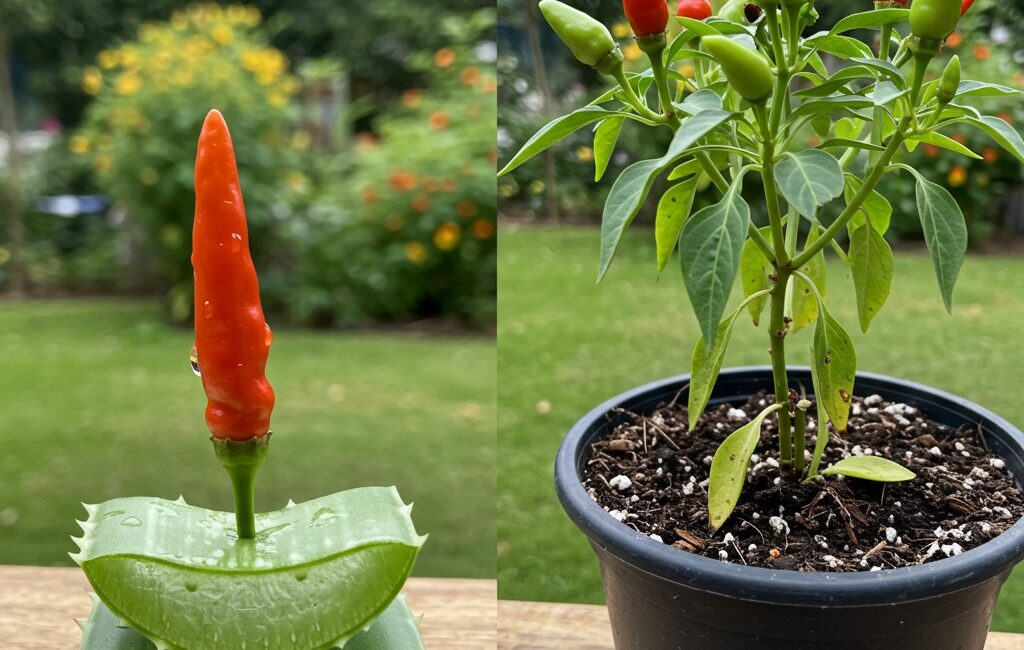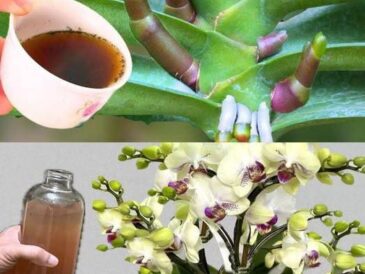Growing chili trees can be a rewarding experience, especially when you get to harvest a bounty of spicy fruits that add flavor and heat to your culinary creations. While most gardeners start chili plants from seeds, propagating chili trees from cuttings offers an exciting alternative—one that can save time, ensure genetic consistency, and produce mature plants faster.
Even better? Using aloe vera gel to enhance root growth dramatically increases your success rate. This natural, organic rooting stimulant encourages faster root development and protects cuttings from diseases, making it an ideal companion for chili tree propagation.
In this comprehensive guide, we will dive deep into everything you need to know about growing chili trees from cuttings using aloe vera—covering preparation, step-by-step instructions, ideal growing conditions, common challenges, and advanced tips to guarantee a flourishing chili tree from your very first cutting.
Why Propagate Chili Trees from Cuttings Instead of Seeds?
Before exploring the method, it’s important to understand the advantages of propagation from cuttings versus seeds.
Faster Growth and Fruiting
Seed-grown chili plants typically require weeks or even months to germinate and mature before fruiting. In contrast, cuttings are clones of mature plants, bypassing the seedling stage and often bearing fruit earlier.
Genetic Consistency
Seeds from hybrid chili varieties may not produce offspring identical to the parent plant. Cuttings, however, ensure the new plant is a genetic replica, preserving the exact traits, flavor profiles, heat levels, and disease resistances.
Cost Efficiency
While seeds are inexpensive, propagating multiple plants from a single mature chili tree using cuttings can be even more economical, especially when factoring in the reduced time to harvest.
Overcoming Seed Germination Challenges
Some chili seeds exhibit low germination rates or require complex pre-treatment. Cuttings avoid this entirely, providing a reliable way to multiply your favorite chili varieties.
Aloe Vera: Nature’s Miracle for Rooting Cuttings
Aloe vera is a succulent known for its remarkable medicinal properties, but did you know its gel is an excellent natural rooting hormone? Here’s why aloe vera is a game changer in plant propagation:
Natural Rooting Hormones
Aloe vera contains auxins and gibberellins, plant hormones critical for stimulating root initiation and elongation. These compounds mimic commercial rooting powders but are organic and chemical-free.
Antimicrobial Properties
The gel’s antifungal and antibacterial qualities help protect cuttings from rot and infection during the vulnerable rooting phase.
Nutrient Boost
Rich in vitamins, minerals, and amino acids, aloe vera nourishes the cutting and soil microbes, improving overall plant health.
Preparing to Propagate: Tools, Materials, and Ideal Conditions
Materials Needed
- Healthy, disease-free chili plant for cuttings
- Sharp, sterilized pruning shears or blade
- Fresh aloe vera leaf
- Clean container or small pots with drainage holes
- Well-draining propagation medium (mix of perlite, vermiculite, and peat moss or coco coir)
- Spray bottle with water
- Plastic bag or humidity dome (optional)
- Rooting hormone powder (optional, if no aloe vera available)
- Labels and markers (to track varieties)
Selecting the Best Cuttings
Choose semi-hardwood cuttings—these are stems that are partially matured, firm but still flexible, usually taken from the middle or upper parts of the plant.
Ideal cutting length: 4 to 6 inches (10 to 15 cm), with at least 3-4 healthy nodes (points where leaves grow).
Avoid cuttings with flowers or fruits—they divert energy from root formation.
Preparing the Aloe Vera Gel
- Select a large, healthy aloe vera leaf.
- Wash the leaf to remove dirt.
- Slice open lengthwise and scoop out the clear gel using a spoon.
- Blend or mash the gel slightly to a smooth consistency for easier application.
Step-by-Step Guide to Growing Chili Trees from Cuttings with Aloe Vera
Step 1: Take Cuttings Correctly
- Using sterilized pruning shears, cut the selected stem at a 45-degree angle just below a node.
- Remove the lower leaves, leaving only 2-3 leaves at the top to reduce water loss.
- If any flower buds exist, pinch them off.
Step 2: Apply Aloe Vera Gel
Click page 2 for more




